
| WWT Shows | CLICK TO: Join and Support Internet Horology Club 185™ | IHC185™ Forums |

|
• Check Out Our... • • TWO Book Offer! • |
Welcome Aboard IHC185™  Internet Horology Club 185
Internet Horology Club 185  IHC185™ Discussion Site Main Page
IHC185™ Discussion Site Main Page  Our Exclusive "Timekeepers Photo Gallery"
Our Exclusive "Timekeepers Photo Gallery"  IHC185™ "Timekeepers Photo Gallery"
IHC185™ "Timekeepers Photo Gallery"  first railroad watch?
first railroad watch?
 Internet Horology Club 185
Internet Horology Club 185  IHC185™ Discussion Site Main Page
IHC185™ Discussion Site Main Page  Our Exclusive "Timekeepers Photo Gallery"
Our Exclusive "Timekeepers Photo Gallery"  IHC185™ "Timekeepers Photo Gallery"
IHC185™ "Timekeepers Photo Gallery"  first railroad watch?
first railroad watch?Go  | New Topic  | Find-Or-Search  | Notify  | Tools  | Reply to Post  |  |
At least Waltham's 1870-model Crescent St. may be the first American watch advertised for railroad use. 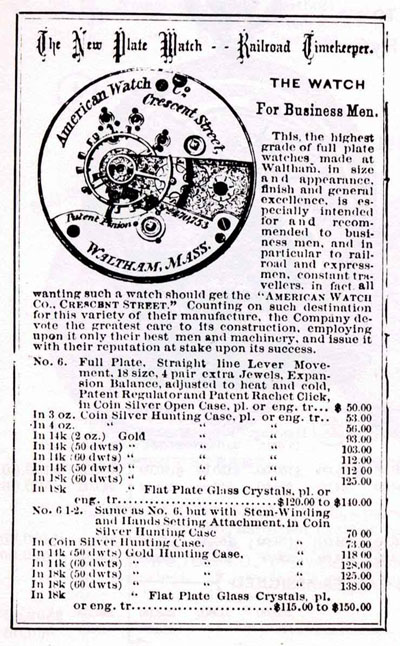 | |||
Here is the movement. This was an entirely new 18-size model for Waltham and was made only in the Crescent St. grade. 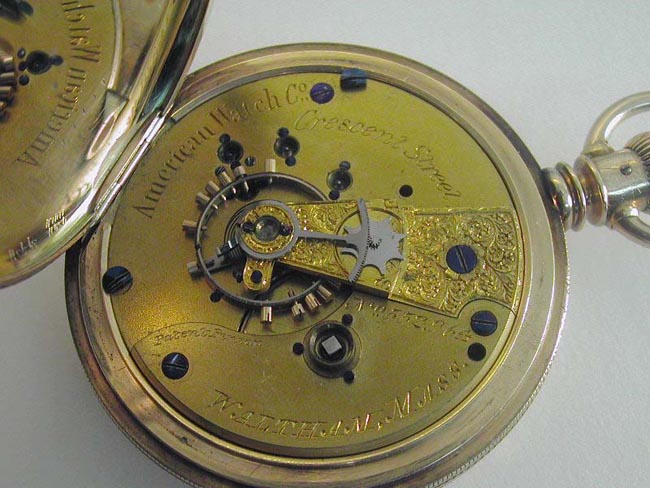 | ||||
Here is the dial. Hardly what we think of for a railroad watch, but all that I have seen have the same dial. 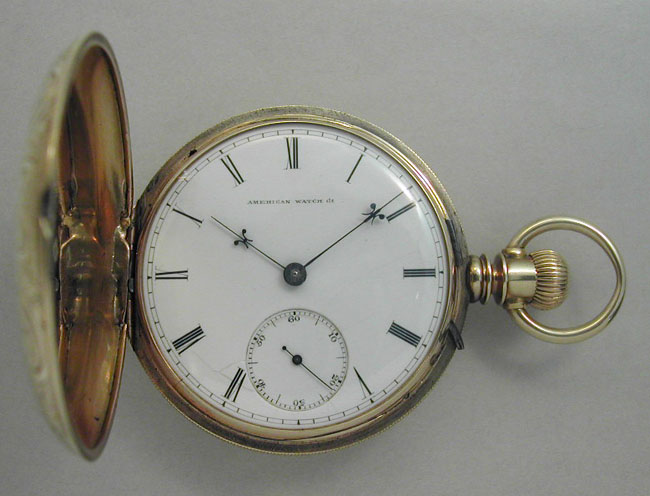 | ||||
and here is another announcement that is more specifically geared to the railroad man 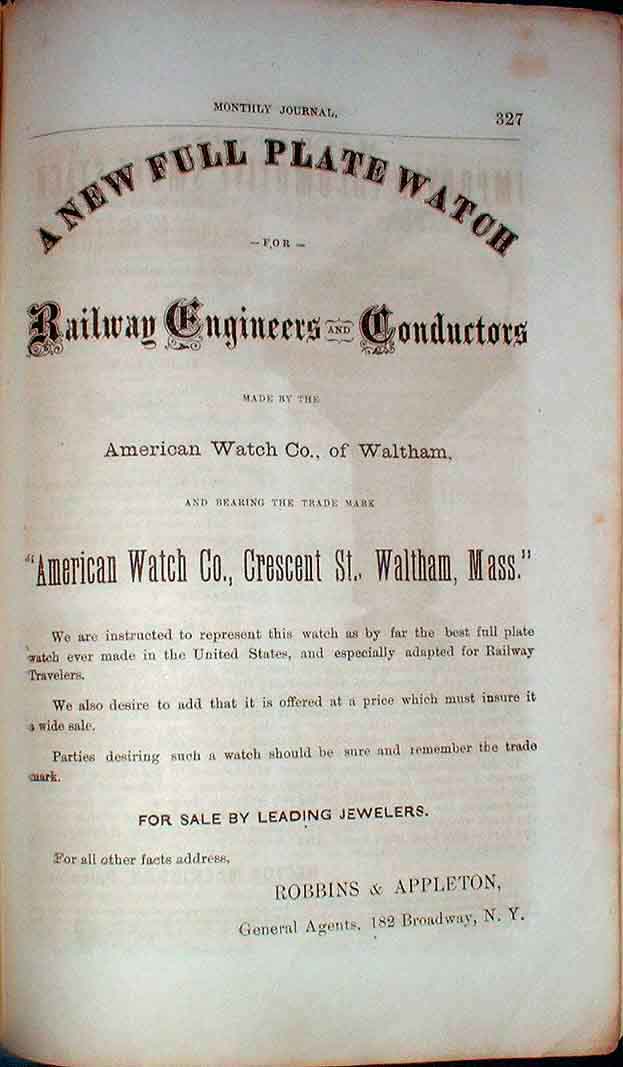 | ||||
I have made inquiries, periodically, for several years and have not yet found anyone who knows this makers mark. I believe it is American, and must date from the early 1870s. 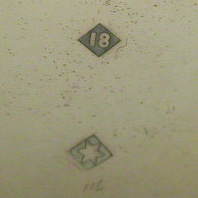 | ||||
I will keep my eye out for the mark too, but you sure have a Beautiful Watch there. Sheila | ||||
Jerry, Great watch. I know that the model 70 came in a lever setting mechanism, but I noted from the dial pic what appears to be a square arbor. Is your watch an original model 70 stemwind, or was it a keywind/keyset with Abbots stemwind device added? Tom | ||||
1870 model production started out keywind and keyset from the back. Mine is a factory-made stemwind movement, but it still has the keywind barrel arbor and you can also see the hole in the plate (below "Street") where the setting arbor would have gone. When they added the stemwinding mechanism they tried several different setting mechanisms. Mine is lever set, but there were also pin or push set versions. Tom McIntyre shows several variations in his collections -- look for the links on This Page | ||||
Jerry, # 501252 stem wind Pin Set.... | ||||
the case is original coin silver and has the most wear I have ever seen. the winding crown is smooth... But it functuions great.. the time screws in the balance are just something to watch ...Wish I had your case... | ||||
| Railway Historian IHC Life Member Site Moderator |
Jerry: What year is your advertisement from the Locomotive Engineers Journal from? I have seen some adds like this in a bound volume of the Journal from 1870. Larry Buchan | |||
Larry, I "swiped" that ad from a thread on the green board a couple of years ago. It was reportedly from the July 1870 issue. I am glad I saved it since the original links are all dead now. | ||||
Jerry, Another question about the square arbor. I wonder if Waltham did something similar to what US Marion did with their first stem wind/stem set watches. The first US Marions were horribly unreliable in the setting mechanism, so Fred Giles' solution was to put a square arbor on them so the user could still set the watch if the stem set failed. I wonder if Waltham ran into something similar and fitted their first lever/pin set models with the square arbor to facilitate setting should the lever set fail. Just a thought. Tom | ||||
Tom - my watch does not have a square for setting the hands. None of the 1870 Crescent Streets did, at least not on the cannon pinion. For the keywind/keyset models there was an arbor that came through the back of the movement. That is one of the extra holes you see on my movement. (The other empty hole, in the edge of the barrel bridge, was for a mainspring let-down screw). [By the way, John, that is a nice example of the pin set variety]. | ||||
Hmmmm ... I delved deeper into my watch and find that it's conversion to stem wind is somewhat clouded. It is not an Abbott's conversion -- it has all genuine factory parts. However, where the pillar plate is milled out for the setting parts it has not been re-gilded. If this had been converted to pendant wind/set as "original equipment" I expect the factory would have taken care of the gilding. Also, the winding pinion bearing has a non-matching number on it, which is possible but not likely if it had been sent back to the factory for re-fitting. It begins to look like an enterprising watchmaker put a lot of work into converting this, using genuine Waltham parts. The pillar plate required considerable extra milling to do this, and it matches an original movement pretty closely as far as configuration of the recesses. (As far as provenance of this watch -- I acquired it from what may have been the original family in the 1970s). | ||||
| Powered by Social Strata |
| Your request is being processed... |
|
©2002-2025 Internet Horology Club 185™ - Lindell V. Riddle President - All Rights Reserved Worldwide

